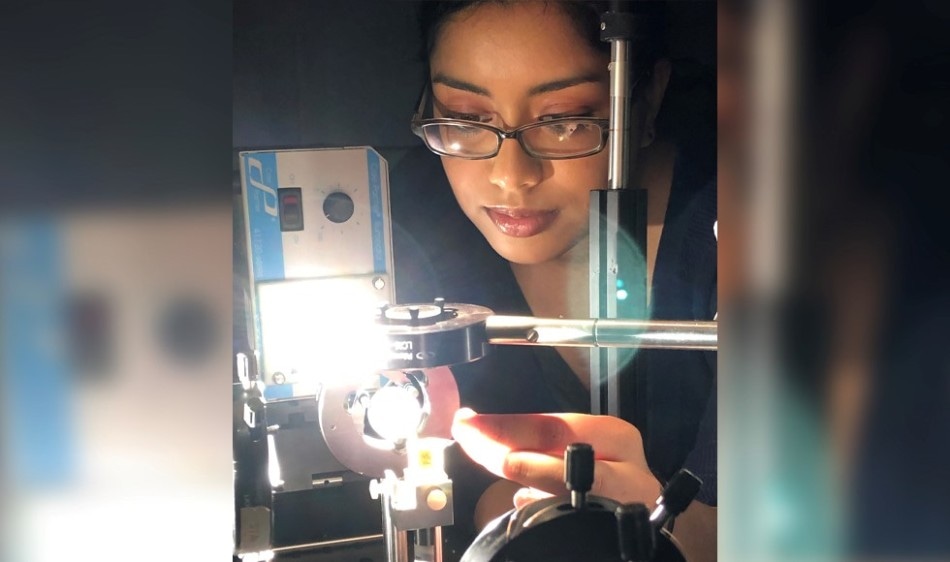May 27 2019
Scientists at McMaster University have created a simple and extremely novel form of computing by shining patterned bands of light and shadow through various facets of a polymer cube and reading the pooled results that occur.
 Master's student Fariha Mahmood is the co-author on a new paper that proposes a new form of computing. (Image credit: McMaster University)
Master's student Fariha Mahmood is the co-author on a new paper that proposes a new form of computing. (Image credit: McMaster University)
The material in the cube reads and reacts instinctively to the light just like a plant would turn to the sun, or a cuttlefish would modify the color of its skin.
The scientists are graduate students in chemistry directed by Kalaichelvi Saravanamuttu, an associate professor of chemistry and chemical biology whose lab concentrates on ideas driven by natural biological systems.
The scientists were able to use their new process to carry out basic addition and subtraction questions.
These are autonomous materials that respond to stimuli and do intelligent operations. We’re very excited to be able to do addition and subtraction this way, and we are thinking of ways to do other computational functions.
Kalaichelvi Saravanamuttu, Associate Professor of Chemistry and Chemical Biology, McMaster University
The scientists’ work, published recently in the journal Nature Communications, signifies a totally new form of computing, one they say has the potential of complex and beneficial functions yet to be visualized, possibly structured along the formations of neural networks.
The form of computing is highly localized, does not require any power source, and works totally within the visible spectrum.
The technology is part of a branch of chemistry referred to as nonlinear dynamics, and uses materials engineered and manufactured to create specific reactions to light.
A scientist shines layered stripes of light via the top and sides of a miniature, glass case holding the amber-colored polymer, itself approximately the size of a die used in a board game. The polymer begins as a liquid and changes to a gel in response to the light.
A neutral carrier beam passes via the cube from the back, in the direction of a camera that reads the results, as refracted by the material in the cube, whose components form instinctively into thousands of filaments that react to the patterns of light to produce a new 3D pattern that reveals the outcome.
“We don’t want to compete with existing computing technologies,” says co-author Fariha Mahmood, a master’s student in chemistry. “We’re trying to build materials with more intelligent, sophisticated responses.”